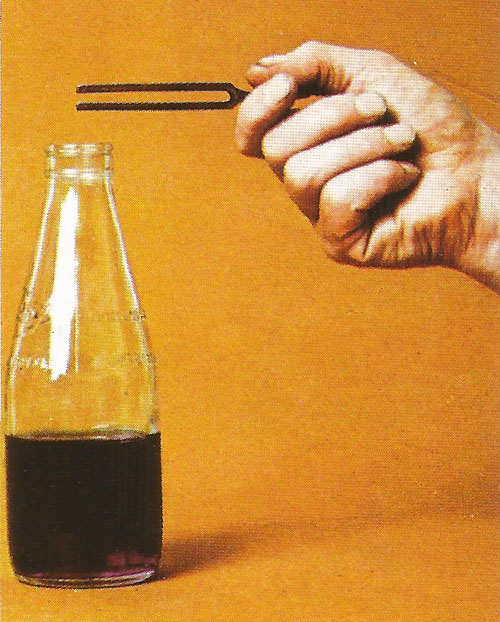resonance

"Resonance can be demonstrated with a milk bottle and a tuning fork. The fork is struck and held over the neck of the bottle. The bottle can also sound, but its frequency depends on the length of the air column inside. It is possible to 'tune' the bottle by adding a liquid until the remaining air space resonates at the same frequency as the tuning fork. The sound of the fork is then much louder.
Resonance is a natural periodicity, or the reinforcement associated with this periodicity. In a broad sense, resonance is the reaction of surrounding components to a vibrating object.
Resonance in musical instruments
Resonance is an important part of musical sounds. It can be demonstrated with a milk bottle and a tuning fork (see photo). The fork is struck and held over the neck of the bottle. The bottle can also sound, but its frequency depends on the length of the air column inside. It is possible to 'tune' the bottle by adding a liquid until the remaining air space resonates at the same frequency as the tuning fork. The sound of the fork is then much louder.
Many musical instruments make use of resonance. The low-volume sound produced by the vibrating string of a violin or guitar, for example, is made much louder by the air resonating inside the accurately shaped body of the instrument.
Vocal resonance
In the vocal system, resonance refers to the enrichment of sound originating from the vibrating vocal folds inside the larynx. Vocal resonance occurs naturally when the voice is free to travel through the spaces above the folds where it is modified and amplified before leaving the mouth; it determines the final quality of the tone and is what distinguishes between the sound of one voice and another.


